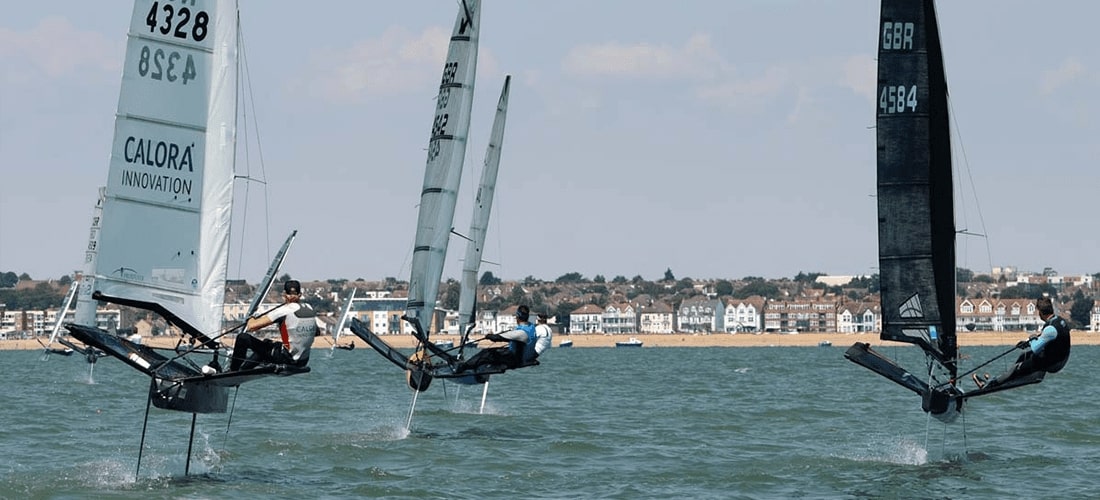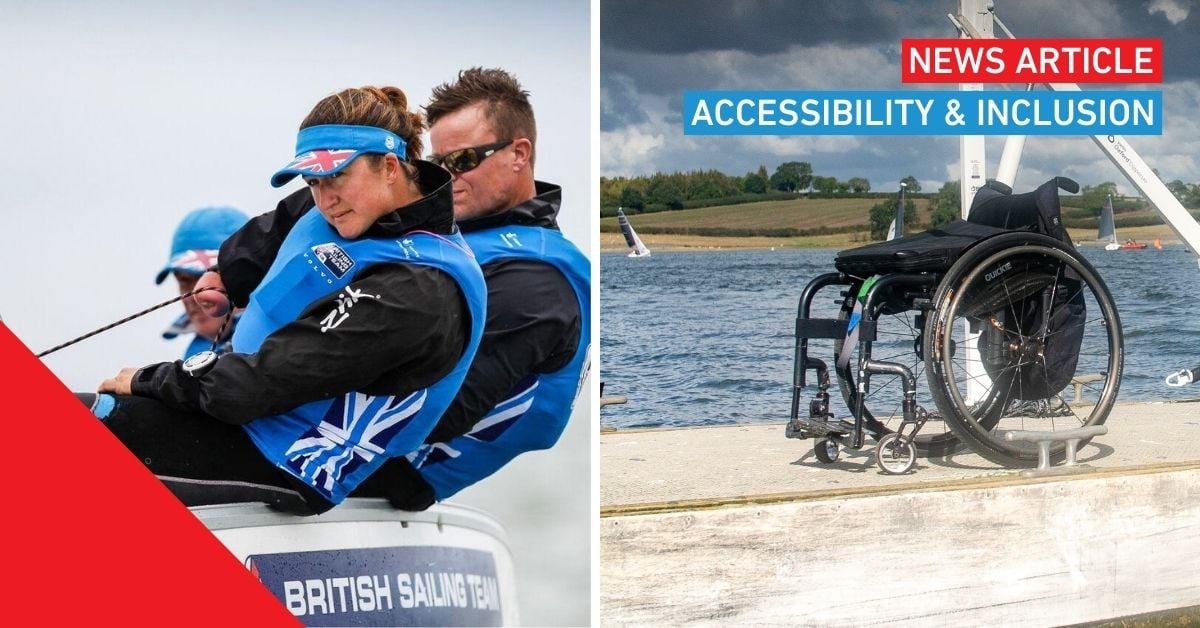Foiling – the logical next step for sailing?
With such a focus on trying to make sailing and watersports accessible and easier for newer generations, the topic of this blog seems a bit counter-intuitive. But having just attended the last day of the UK national championships of the International Moth foiling dinghy sailing class, thanks to an invitation from sponsoring clothing retailer, Wetsuit Outlet my interest in the whole idea of flying your boat silently across the water has been well and truly fired.
The signs have certainly been there that foiling is emerging from the realm of the exotic and experimental. Australian company Glide Free Foils won itself a DAME Awards Nomination back in 2014 for its conversion kit for the Laser sailing dinghy. It has subsequently released foiling kits for the RS Aero, O’pen Bic and Melges 14.
Last year, the impact of Multiplast’s work with Beneteau, to create the foils for the Figaro 3 on a tightly controlled production basis, was cited as profound by the judges of the IBI and METSTRADE Boat Builder Awards for Business Achievement, held in partnership with Raymarine. The Multiplast / Beneteau collaboration opens the possibility for foils to be used in more widespread production yachting applications. Writing earlier this year for Yachts & Yachting magazine, boat tester and competitive sailor, Rupert Holmes, praised the Figaro 3 as “simply spectacular – a cutting edge design that clearly sets the benchmark against which other boats will be judged for a long time.”
So, it seems you don’t have to indulge millions in an America’s Cup AC75 monohull foiler or one of the proposed Volvo Ocean Race IMOCA 60 foilers to go flying.
Experimental foiling development on a budget
Even the International Moth class that pioneered foiling on a relatively small budget has become much more production oriented from its truly pioneering but often fragile and quirky routes. A handful of specialist builders like Mach 2 in Australia and Aadvark Technologies and Maguire Boats in the UK have been exploring the boundaries of the tandem T-foil single-hander and its predominantly carbon fibre construction for some years now. UK-based professional sailor, Kyle Stoneham competes with a Maguire-built Exocet Moth and explains that, after years of experimentation in the class, Kelvin Ellway of Ellway Aero-hydrodynamic Designs invested considerable design effort into areas like the Exocet’s foils and these have been pretty much standard now for at least five years. “We’d like to go thinner with the foils,” Stoneham states, “but at present we’ve pretty much reached the limit of compromise between thinness, stiffness and reliability.”

Despite the more recent applied science, the International Moth remains a development sailing class with only basic rules. For that reason, it is a concept that receives an incredible amount of input and experimentation from the people sailing them. It is design arguably at its very best, boosted by theoretical effort but fine-tuned every weekend out on the water.
Races are quick, the 30-knot capable Moths can cover close on a kilometre in one minute. And none of the action is processional; sailors typically pick tactics to suit their weight, physical strength and set-up. So, it’s great entertainment too, even watching, provided you can get close enough to the action for long enough as the Moths fly around the course completely silently.
Foiling the next natural development of dinghy sailing
As chair of the UK International Moth Association, Stoneham is a big advocate: “Foils are the natural development of the other steps that have taken dinghy sailing to its current level, such as spinnakers, use of trapeze, high aspect ratio rigs, lightweight skiffs, and so on. It takes time to learn how to foil but the top sailors now regularly do things that would have been less usual before, like gybing on the foils. Given that greater level of knowledge and the improvements in the boats, it takes newcomers less time to get started now.”
Stoneham has also got very involved in the Vampire Project, a not-for-profit catamaran design based on the Swedish built M20 that uses canting T-shaped foils with the aim of generating International Moth performance but in package that people will find easier to sail.
text
He has been campaigning one of the two examples built to-date and got it over the line fourth in the Round Texel Race, quite an achievement given that he spent part of the race nursing a broken foil. Again, the Vampire is a child of this fascinating combination of theoretical and experimental design, having been born from the ideas of William Sunnucks, analysed by Kevin Ellway, converted to designs by Rich Taylor and moulds by Lee Morgan before being built by Graham Eeles, yet another pioneering small boat builder. They were assisted along the way by collaborative input from many experienced foiling sailors. It’s all the excitement of an America’s Cup project, but on a tiny budget and without the rules and politics.

Can projects such as the Figaro 3, International Moth and Vampire appeal to new generations of sailors? At first glance, you’d be tempted to say no. Despite the improvements, there’s still a skill barrier to overcome. However, I have more than a sneaking suspicion that the collaborative and cutting edge nature of this kind of activity will find more fans. Plus, who would not want to experience completely silent sailing at 30 knots – that would sure tick an experience box for many that they would then want to repeat.
Is foiling set to make more of an impact on the mainstream? As ever, I’m interested in your comments.
Share your stories on leisure marine industry with us
Do you have an innovation, research results or an other interesting topic you would like to share with the leisure marine equipment industry? The METSTRADE website and social media channels are a great platform to showcase your stories! Let us know via metstrade@rai.nl
Are you a METSTRADE exhibitor?
Make sure you add your latest press releases to your Company Profile in the Exhibitor Portal for free exposure.






